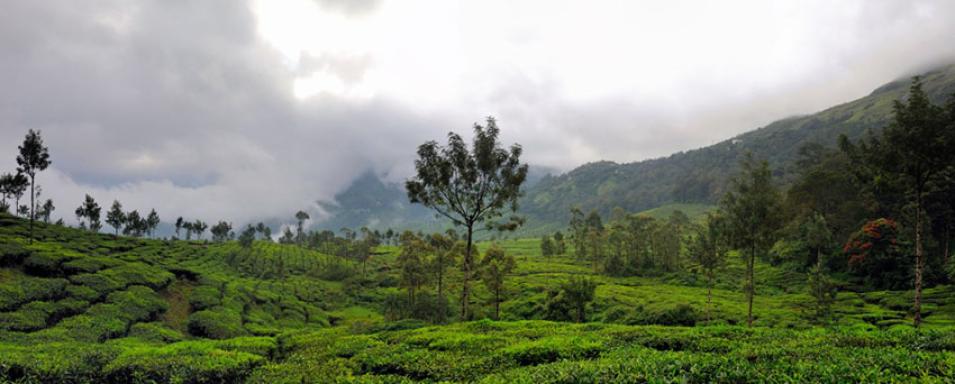Aging plantations
Tea is a relative newcomer to India’s agricultural scene, introduced by the British in the early 1800s to compete with China. In less than 200 years, the tea industry has become India’s second largest employer and is a mainstay in the country’s economy. India is home to nearly 1,600 plantations that grow an extensive variety of black and green teas. Many plantations have been producing tea for 50 to 100 years or more, and their harvesting and production methods are steeped in tradition. Yet their very age may contribute to the problems the industry now faces.
“The big production period for plantations is between twenty and forty years,” said Rishiraj Dutta, one of the researchers who studied ways to modernize India’s aging tea industry. “Most of the plantations in India are more than sixty years old. So their productivity levels and tea quality are starting to decline.” Plant age, soil depletion, and increasing pest infestations are making it difficult for plantations to continue producing the quality and quantity of tea that they have in the past.
Dutta and his colleagues hoped to use remote sensing to help get the most out of tea plants. Qualities of specific tea varieties, such as Darjeeling’s astringent muskiness, or the bold flavor of Assam tea, rely heavily on specific chemicals within the tea leaves. “The tea industry wants to come up with new technologies to effectively monitor and manage these plantations. That’s where this research started,” Dutta said. Could multispectral remote sensing permit plantation managers to monitor the chemistry of tea leaves from space?
First flush
From the first shoots of spring through the series of summer harvests, called flushes, tea production is tightly controlled to nurture and retain the finest tea qualities. Specific chemicals in the leaves determine tea quality, including the flavor, color, appearance, mouthfeel, and the brightness of the brewed product. A class of compounds called polyphenols has a large influence: Catechins and tannins contribute an astringent taste, and theaflavins play a role in flavor and color. Tannin levels also generate the mouthfeel of tea—whether it feels smooth or rough in the mouth. One of the most well-known compounds, caffeine, helps determine the briskness of tea. Combined, these constituents create a tea’s overall flavor.
The chemical makeup of tea leaves develops as the plants grow, meaning the qualities of each flush differ. The first flush of certain varieties, such as Darjeeling, is highly valued. Yet other varieties are considered best during their second flush. Likewise, the subsequent third and fourth flushes will have slightly different qualities and flavors as each of the chemicals increases or decreases. “We considered the first flush and the second flush for this study. We can see the difference in the chemical parameters in the green leaves, as well as with the black tea,” Dutta said. Ideally, these chemical differences reveal variations in catechins, tannins, and caffeine content of the leaves from flush to flush.
Dutta and his colleagues focused on two particular tea clones on a plantation that is part of the Tocklai Experimental Station in the Jorhat district of Assam, India. They planned to use a satellite instrument to measure the Normalized Difference Vegetation Index (NDVI), which is a visual indicator of vegetation abundance and health. Remotely sensed NDVI reveals how the leaf canopy reflects light at different frequencies across the electromagnetic spectrum, many of which are invisible to the human eye. In this case, Dutta also hoped it would help distinguish the chemical components in the leaves that were responsible for tea quality.


